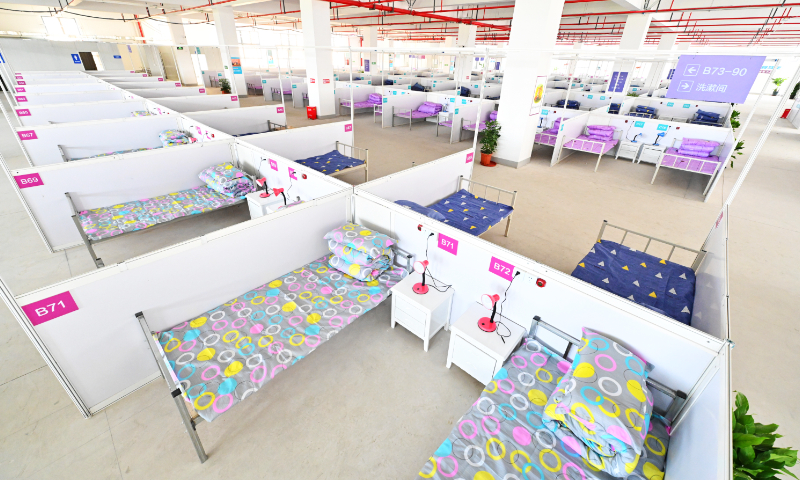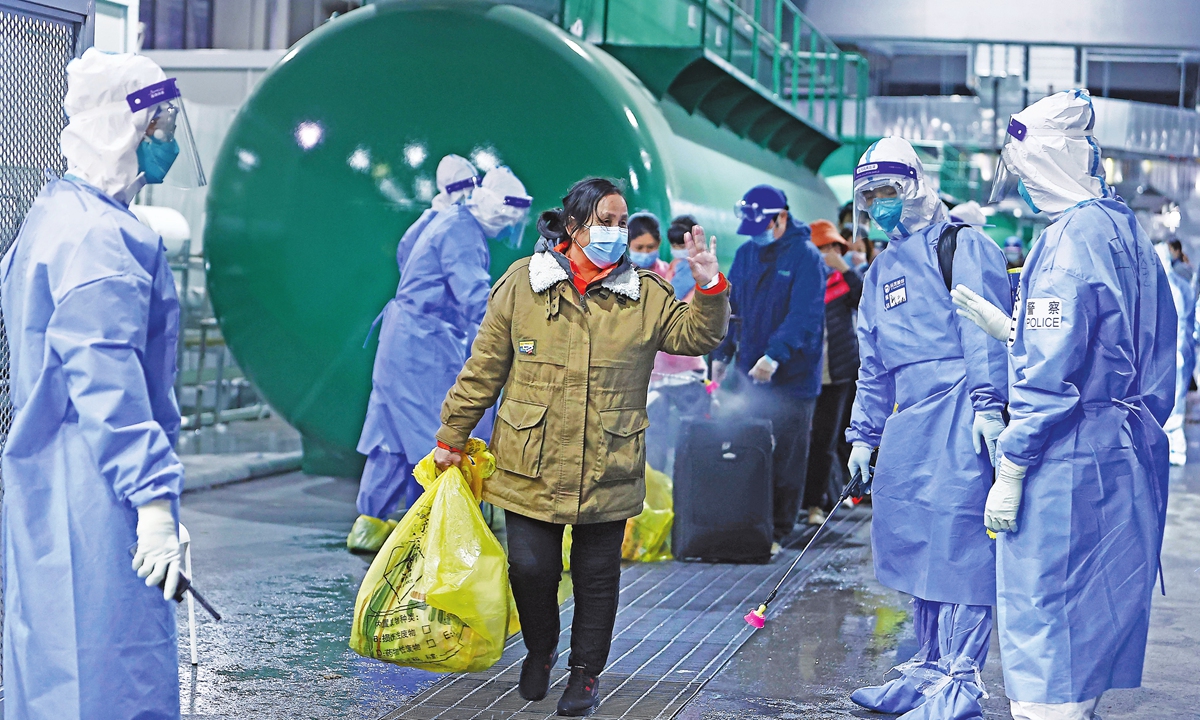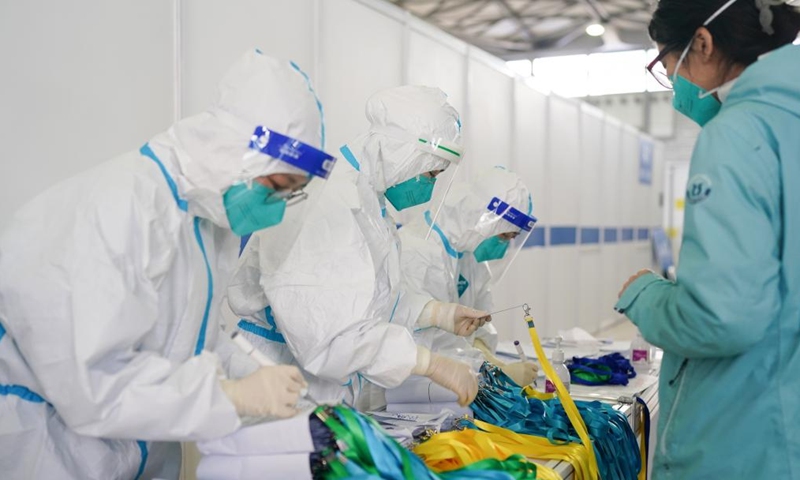Dynamic zero-COVID policy is the best option currently: chief epidemiologist of China's CDC

A makeshift hospital in Fengxian district, East China's Shanghai Photo: VCG
Given the recent complex epidemic situation in China and that some people are less confident in the dynamic zero-COVID policy and confuse "dynamic zero" with "zero infection," Wu Zunyou, chief epidemiologist of the Chinese Center for Disease Control and Prevention, detailed in his latest article the basic principles of the roles that the policy plays in epidemic prevention to avoid misunderstandings among the public.
According to Wu, the fundamental purpose of the dynamic zero-COVID policy is to detect an outbreak, put it out and prevent it from "taking root" in the area. The "zero-COVID" policy targets individual flareups instead of the nationwide epidemic, in a broader sense.
Besides, "dynamic" means that whenever there is an outbreak, it can be contained in a short time and narrow down the epidemic to zero.
According to Wu, the coronavirus has to transmit among humans to sustain its long-term survival. Therefore, picking out all the infections, put them in quarantine and stop the spread of the virus to others can eliminate the virus.
Dynamic zero-COVID policy is the best option when there is no sustained local transmission of COVID-19 and the local flareups are mainly caused by imported infections.
Generally speaking, the earlier the outbreak in a small area is detected, the easier it is to achieve "dynamic zero." Even if community infections occur to some degree, as long as the cases account for a small proportion of the nationwide total, "dynamic zero-COVID" can still be achieved, Wu wrote.
According to Wu, the Achilles' heel of the epidemic is the discovery and containment of outbreaks as early as possible to minimize the threat posed by the virus on people's health and life, as well as its impact on social stability and economic development.
Wu also noted that the core of the "dynamic zero-COVID" policy is to cut off the transmission chains. The major measures include early discovery, report, quarantine and treatment, which combined can prevent the coronavirus from re-entering the country and cause a new outbreak.
Wu stressed that the dynamic-zero policy does not mean zero infections but that " every outbreak, we should bring it under control in a relevant short period of time."
Wu also explained that the motto often used by China recently of "community-level clearance," points to the fact that there is no infected personnel in the socially active population. Therefore, even if there are infected patients in hospitals, it will not affect the community level as they are under quarantine.
"Dynamic-zero is achieved as long as no new infections are found in a maximum detoxification period [as indicated by nucleic acid testing] or a maximum incubation period [as indicated by confirmed cases] in consecutive community and outpatient screenings," Wu said.
As for the opinion that dynamic-zero approach is the same as a city lockdown and citywide nucleic acid testing, Wu said that it depends on how early the infections are detected. If the epidemic is spotted in an early phase, only close contacts need to be quarantined and no community lockdown or citywide testing will be needed.
Finally, Wu pointed out that contrary to the opinion of some people that dynamic-zero posts a huge impact on the economy, the measure actually protects the economy to the largest extent. According to a preliminary analysis by mathematical modeling experts, the impact of a dynamic-zero strategy on the local GDP is only half of the economic impact of a non-dynamic clearing strategy.



